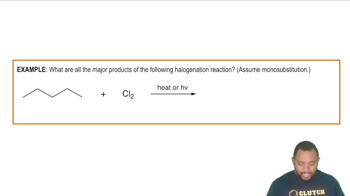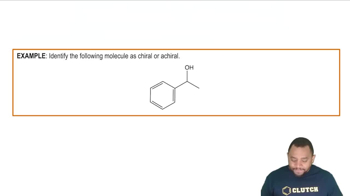Here are the essential concepts you must grasp in order to answer the question correctly.
Chirality
Chirality is a property of asymmetry important in several branches of science, particularly in chemistry. An object is considered chiral if it cannot be superimposed on its mirror image, much like left and right hands. This concept is crucial in understanding molecular structures, especially in organic chemistry, where chiral molecules can have different biological activities.
Recommended video:
Symmetry
Symmetry refers to the balanced and proportionate similarity between two halves of an object. In the context of chirality, an object that possesses a plane of symmetry is achiral, meaning it can be superimposed on its mirror image. Recognizing symmetry helps in determining whether an object is chiral or achiral, which is essential for identifying chiral substances.
Recommended video:
Examples of Chiral Objects
Common examples of chiral objects include human hands, certain types of shells, and some tools like golf clubs. These objects exhibit handedness, meaning they have distinct left and right forms that cannot be aligned perfectly with their mirror images. Understanding these examples aids in visualizing chirality and recognizing it in various contexts, including biological systems.
Recommended video:




